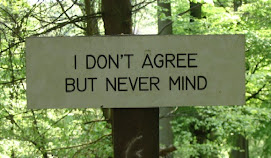So in an idle moment, I wondered whether I'd made that up, or actually seen it somewhere. With hindsight, I was thinking of occasions where I'd seen 'dayglo' being particularly effective - and often they were in (relatively) low light conditions, ie not on clear, sunny, summer days (no, I won't explain what they are, ask your mum).
Now, I do know that fluorescent colours are one of the few occasions where there is a 'free lunch', as they not only work as 'normal' colours would, reflecting visible light (and scattering it - otherwise they'd be mirrors), but they also take in ultraviolet light and re-emit is as visible light.
A quick look at the light spectrum shows us that UV is some way 'past' blue on the visible light spectrum.

Note: UV is well away from the 'red/orange' end of the visible spectrum.
So perhaps a good start for my theory is to examine daylight, and try to find out whether there's a higher percentage of UV in the light coming to us through the day.
Worth pointing out here that it's UV that causes sunburn - and I guess you're all well aware of how the risk of sunburn varies through the day, so that give a hint of how the UV varies . . .
Since the light coming from the Sun – whether visible or UV – is in a constant ratio, it’s a fair guess that mid-day’s the time of day when fluorescent colours will really ‘glow’.
But is it the ‘best’ time for them to show to an advantage over ‘plain’ colours? In the heat of the mid-day Sun, the light is more ‘overhead’, and particularly bright sunshine will cast strong shadows. If there’s any reflected sunlight heading in your direction you may find it difficult to see anything, fluoro or not!
However, you may not be out in mid-day sunshine, it may be mid-day overcast or that thin, high cloud you often get in the summer (do you remember ‘summer’?). And in the same way that cloud will ‘scatter’ visible light, it will also scatter the UV. The effect of the visible light being scattered is to give a ‘flatter’ effect without strong light and shade. But UV isn’t scattered so much as visible light - so this could be a time when fluoro colours start to come in to their own.
But what if you move to either end of the day, sunrise and sunset?
You’re probably aware of the old rhyme:
“Red sky in morning, shepherds take warning,
Red sky at night, old haybarn alight”
Well, that reddening of the sky isn’t just to keep the farmers busy, it exists because of the way the Earth’s atmosphere scatters light – in particular the ‘blue’ end of the spectrum. Yup, guess where the UV is? (There’s a hint in the ‘violet’ bit) If you happen to be lucky enough to find a clear sky one day, look up and you’ll find that the sky is ‘bluest’ at 90 degrees to the Sun.
Unfortunately, the atmosphere scatters more UV than it does visible light, so it looks like my ‘dusk’ theory is really going down in [fluorescent] flames . . .
But hang on! If there’s less visible light, the fluorescent dye could still be benefitting from what UV there still is, and as our eyes adapt to the lower light levels, then the fluoro could be more apparent.
Just to add some confusion, the light we get varies in colour and content too! See this diagram for some comparisons:

While browsing I happened upon this quote:
“As we say: "to see" means "to understand", and to understand means to see clearly, not colorfully.”
In other words, it won’t matter what colour you are if the potential observer doesn’t look. Well, that’s my interpretation anyway!
Resources used:
http://en.wikipedia.org/wiki/Ultra-violet
http://en.wikipedia.org/wiki/Fluorescence
http://www.handprint.com/HP/WCL/color1.html
.





2 comments:
Your comment on the bluest part of the sky concurred with what I learned assisting a wedding photographer in my younger years - something about sun zenith angle. The other tip for photographers is to use a polarizing filter to help with this too.
Another problem with fluorescent dyes is that they seem to decay in use quite rapidly. (I'd guess this is an effect of U/V on them as well)
I've noticed several (not very) hi-viz jacket wearers looking rather faded out there recently. One was really just a greyish white in patches rather than hi-viz at all.
Post a Comment